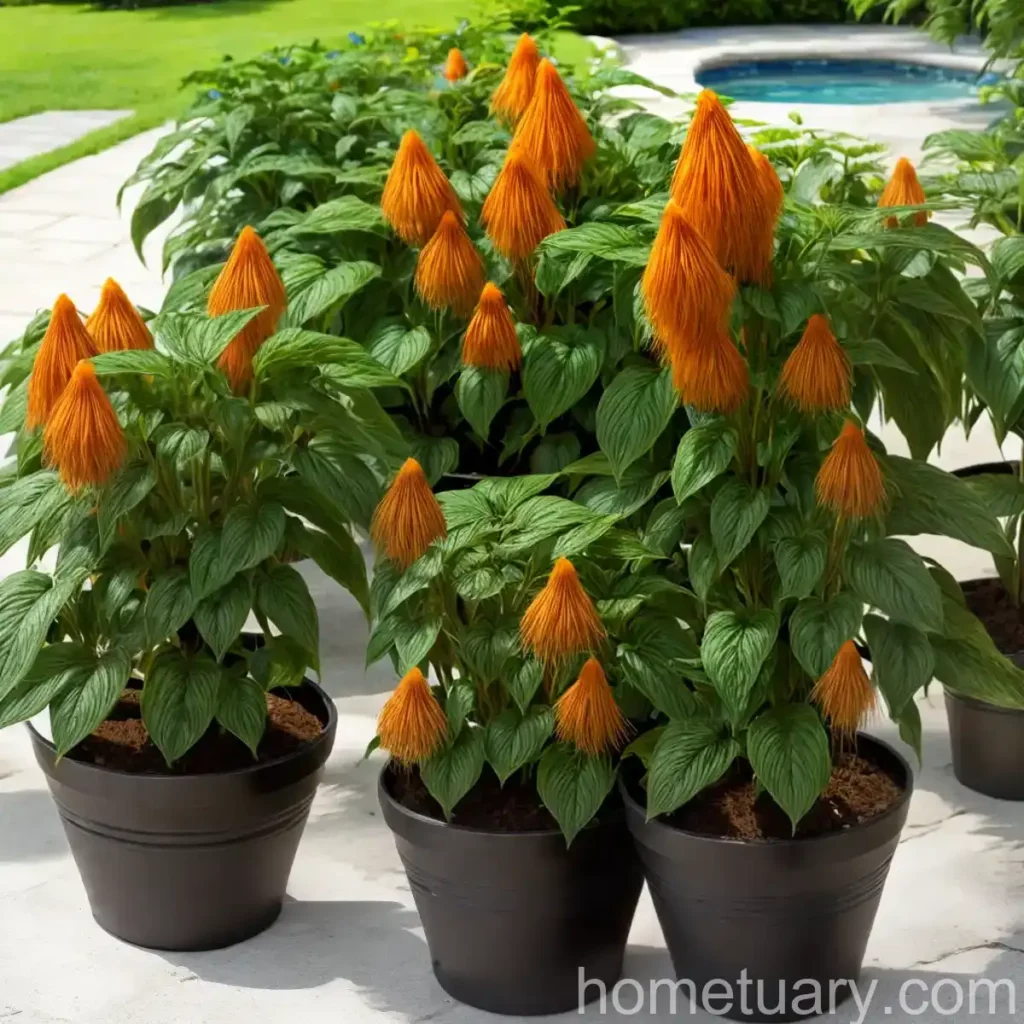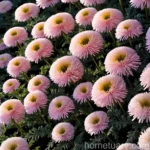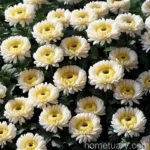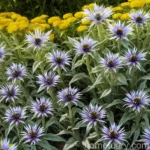Velvet Plant (Gynura aurantiaca): A Complete Care Guide
Plants bring a sense of tranquility and beauty to any space, and the velvet plant (Gynura aurantiaca) is no exception. These stunning plants, also known as purple passion vine or velvet plant, are popular for their vibrant and unique foliage. In this comprehensive care guide, we’ll delve into the various aspects of cultivating and caring for this fascinating plant.
What is the Velvet Plant (Gynura aurantiaca)?
The velvet plant, scientifically known as Gynura aurantiaca, is a stunning herbaceous perennial with striking purple leaves that are covered with fine hairs, giving them a velvety texture. Native to Java, it belongs to the Asteraceae family and is known for its vibrant foliage, making it a popular choice for indoor and outdoor gardening.
Key Takeaways – Velvet Plant (Gynura aurantiaca)
Before we dive into the specifics of caring for the velvet plant, here are some key takeaways about this fascinating species:
- Botanical Name: Gynura aurantiaca
- Common Names: Velvet plant, Purple passion vine
- Foliage: Deep purple, velvety leaves
- Cultural Significance: Ornamental plant
- Growth Habit: Trailing vine
- Sunlight: Bright, indirect light
- Watering: Moderate watering needs
- Soil Type: Well-draining soil
- Pruning: Regular pruning to maintain shape
- Propagation: Can be propagated from stem cuttings
- Popular Uses: Indoor and outdoor ornamental plant
Now, let’s explore the various aspects of caring for the velvet plant in detail.
Culture
Cultivating and nurturing the velvet plant requires an understanding of its specific cultural preferences. From water and sunlight requirements to soil and fertilizer needs, here’s a comprehensive guide to ensure the healthy growth of Gynura aurantiaca.
Uses
The primary use of velvet plants lies in their ornamental value. Their unique foliage and trailing vine habit make them an attractive addition to indoor spaces, hanging baskets, and even outdoor gardens in suitable climates. Additionally, the velvet plant’s distinctive appearance adds aesthetic appeal to interior design and home decor setups.
Water
Proper watering is essential for the health and vitality of velvet plants. These plants prefer moderately moist soil, and it’s crucial to avoid waterlogged conditions, which can lead to root rot. To determine when to water, it’s advisable to check the soil moisture level with your fingers. Water the plant when the top inch of the soil feels dry. During the growing season, typically spring and summer, velvet plants may require more frequent watering.
Sunlight
In their natural habitat, velvet plants thrive under dappled sunlight or partial shade. When grown indoors, it’s essential to provide these plants with bright, indirect light to maintain their vibrant foliage. Direct sunlight can cause the leaves to scorch, so placing the plant near a window with sheer curtains or using artificial grow lights can provide the ideal lighting conditions.
Fertilizer
Fertilizing velvet plants during the growing season can support healthy growth and vibrant foliage. A balanced, water-soluble fertilizer formulated for indoor plants can be applied at half the recommended strength once a month during the growing season. It’s important to avoid overfertilization, as this can lead to salt buildup in the soil, potentially damaging the plant’s roots.
Soil
Well-draining soil is crucial for velvet plants to prevent waterlogging, which can adversely affect their health. A high-quality potting mix designed for tropical plants or African violets can provide the ideal growing medium for Gynura aurantiaca. Additionally, adding perlite or coarse sand to the potting mix can improve drainage and aeration, creating a more conducive environment for the plant’s roots.
Pruning
Regular pruning is beneficial for maintaining the shape and appearance of velvet plants. Trimming leggy growth and removing any damaged or discolored leaves can promote a more compact and bushy growth habit. Additionally, propagating new plants from the pruned cuttings is an excellent way to expand your collection of velvet plants or share them with fellow gardening enthusiasts.
Propagation
Velvet plants can be propagated through stem cuttings, making it easy to create new plants from existing ones. Here’s a simple propagation method to expand your velvet plant collection:
- Select a healthy stem with several sets of leaves.
- Using clean, sharp scissors or pruning shears, cut the stem just below a leaf node.
- Remove the lower leaves from the cutting, leaving only a few leaves at the tip.
- Dip the cut end in rooting hormone powder to encourage root development.
- Plant the cutting in a small pot filled with moistened potting mix.
- Place the pot in a warm, bright location with indirect sunlight.
- Keep the potting mix consistently moist and watch for new growth, indicating successful rooting.
By following this simple propagation technique, you can propagate and share the beauty of velvet plants with friends and family.
Container Popularity
Velvet plants are highly popular as container plants, thanks to their trailing vine habit and stunning foliage. They are often grown in hanging baskets or placed on elevated surfaces to showcase their cascading growth. When selecting a container for a velvet plant, it’s important to choose one with drainage holes to prevent waterlogging. Additionally, consider the size of the container to provide ample space for the plant’s roots to spread and thrive.
Common Diseases
While velvet plants are relatively low-maintenance, they are susceptible to certain diseases and pests. Being aware of common issues and their appropriate treatments can help ensure the long-term health of these remarkable plants.
Disease Diagnosis
One of the primary diseases that velvet plants may encounter is powdery mildew, which manifests as a white, powdery substance on the leaves. This fungal disease often occurs in conditions of high humidity and poor air circulation. To address powdery mildew, it’s essential to improve air circulation around the plant, avoid overhead watering, and treat the affected foliage with horticultural oil or neem oil.
Common Pests
Several pests can pose a threat to velvet plants, including aphids, spider mites, and mealybugs.
Aphids, for instance, can cause damage by sucking sap from the plant, leading to distorted growth and a weakened overall condition. Regularly inspecting the foliage for signs of pests and using natural remedies such as insecticidal soap or neem oil can help manage pest infestations effectively.
Botanist’s Tips
To maintain the optimal health and appearance of velvet plants, consider the following botanist’s tips:
- Humidity: Velvet plants appreciate moderate humidity levels, making them well-suited for placement in bathrooms or kitchens, where the air tends to be more humid.
- Regular Inspection: Periodically inspect the foliage for signs of pests or diseases, and address any issues promptly to prevent them from spreading.
- Promote Bushy Growth: Pinching back the growing tips of velvet plants can encourage branching and a more compact growth habit, contributing to a lush, full appearance.
Fun Facts
Explore some fascinating and lesser-known facts about velvet plants:
- The velvety texture of the leaves serves as a natural defense mechanism against herbivorous insects, deterring them from feeding on the foliage.
- In traditional medicine, velvet plants have been used for their potential health benefits, which include stress relief and air purification.
- The botanical name “Gynura” is derived from the Greek words “gyne,” meaning woman, and “oura,” meaning tail, alluding to the plant’s trailing vine habit.
Links to External Resources
For further reading and detailed information on velvet plant care and cultivation, the following external resources provide valuable insights:
- Gynura aurantiaca: An Unusual Houseplant from Java
- Growing Gynura aurantiaca Indoors
- The Velvet Plant: Gynura aurantiaca
- Gynura aurantiaca – Velvet Plant
- Purple Passion Plant (Gynura aurantiaca): How to Grow and Care
Conclusion
The velvet plant (Gynura aurantiaca) is a captivating addition to any indoor or outdoor garden, prized for its striking foliage and low-maintenance nature. By understanding and implementing the key care guidelines discussed in this comprehensive guide, you can cultivate healthy, vibrant velvet plants and enjoy the aesthetic appeal they bring to your living spaces. Whether you’re a seasoned plant enthusiast or a novice gardener, the unique beauty and ornamental value of velvet plants make them a delightful choice for botanical exploration and horticultural enjoyment.
Happy gardening!















